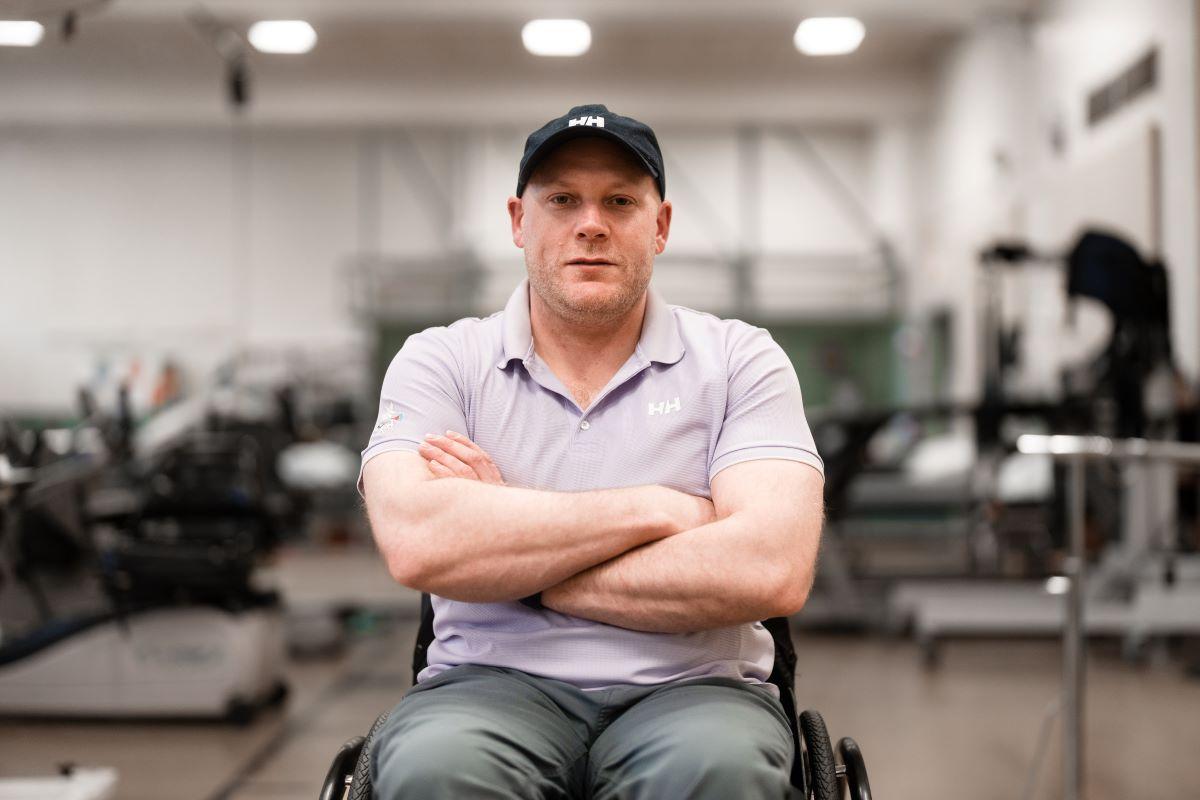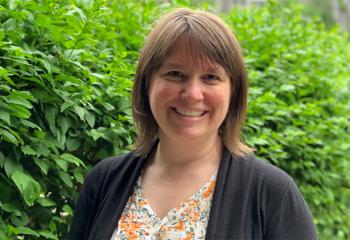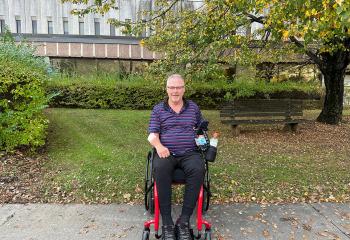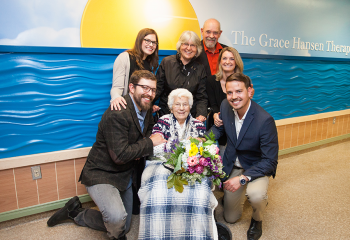
Article originally published by The Chronicle Herald and SaltWire.com. Pictured: Jamie Rygiel has been receiving specialized rehabilitation therapy at the QEII following a medical emergency last June. Photo Credit: Uncharted Media Inc.
Last year at about this time, Jamie Rygiel had started an exciting new job and was counting the days until the birth of his first child.
Life was good for the then 38-year-old. That quickly changed when he developed a life-threatening medical emergency that left him with an incomplete spinal cord injury, resulting in paraplegia.
He was initially treated for inflammation after experiencing severe back pain. Then, over a few hours, he had no feeling from the waist down. An MRI revealed a large abscess on his spine from an undetected blood infection.
He underwent emergency surgery at the QEII Health Sciences Centre and learned his paralysis may be permanent. It was a devastating blow for Jamie. Equally upsetting was the fact he would miss the birth of his daughter who entered the world just days after his surgery.
“That hit me pretty hard,’’ Jamie admits.
He spent five months as an inpatient at the Nova Scotia Rehabilitation and Arthritis Centre at the QEII, undergoing intense physiotherapy with one of his goals being able to walk again.
About a month after surgery, he regained movement in a toe and things have been progressing well since then. In fact, Jamie is now able to stand in a walker and take some steps.
“Just the last two weeks, we began walking with the walker and last week, I was able to do 20 metres,’’ he recently shared. “That was quite significant because two weeks before that, that wasn’t possible.’’
He still attends the Rehab Centre for physiotherapy on a weekly basis. He’s setting his goals high in hopes of being able to walk unassisted again and, because of his love of the ocean, perhaps even walk the shoreline with his daughter someday.
Jamie says his therapists have been a huge key to his success.
However, like so many other areas of health care in the region, he says the Rehab Centre often struggles with a lack of modern equipment and technology that could potentially enhance not only his progress, but countless others.
In response, the QEII Foundation is raising $1.45 million as part of its Rehab Refresh project to acquire modernized equipment and technology that will support the exceptional care provided by the staff at the Rehab Centre, ensuring patients have access to the tools they need to reach their goals. The initiative is part of the QEII Foundation’s $100-million We Are campaign.
Andrea Goldstein, a health services manager and physiotherapist at the Rehab Centre, says the project is vital.
“The new technology and equipment will provide us with better outcome measures and an ability to assess and create unique treatment plans for our patients. It will help staff keep up with the technology and best practices that happen across Canada,’’ Andrea explains.
Physiotherapist Tara Moore, a member of Jamie’s care team, expects the new equipment will improve patient outcomes and satisfaction. It will also aid in data collection and guide staff in their approach to care.
“We want to help support patients who need or would benefit from the higher-tech options they’ve been asking for, like a Functional Electronic Stimulation device, which a lot of people are excited about,’’ says Tara.
Functional Electronic Stimulation is a treatment that uses electrical impulses to activate specific muscles and nerves, making it an option for those who have experienced a spinal cord injury.
Occupational therapist, Caroline Robinson, says with donor support, newly acquired equipment will “also help to progress arm and hand function, which will lead to increased independence with daily activities, and mobility for walking or wheelchair use.’’
Staff at the Rehab Centre appreciate the generosity of QEII Foundation donors. Andrea says they’ve seen first-hand how donations have benefited patients and helped staff offer a more up-to-date, higher-level standard of care.
“We can’t do that without the generous donations of all of our donors and every little bit helps,’’ adds Andrea. “It also provides a sense of reward and purpose to the staff to be able to have access to this equipment to be able to assess and treat people.’’
To learn more about the QEII Foundation or to make a donation in support of the Rehab Refresh project at the QEII, visit QE2Foundation.ca/Rehab.


